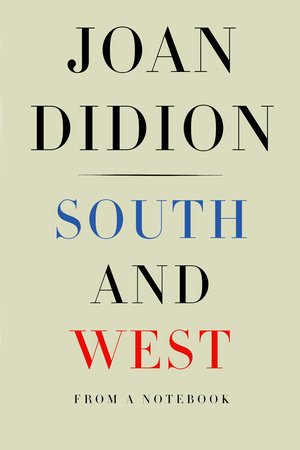
News
Harvard Alumni Email Forwarding Services to Remain Unchanged Despite Student Protest

News
Democracy Center to Close, Leaving Progressive Cambridge Groups Scrambling

News
Harvard Student Government Approves PSC Petition for Referendum on Israel Divestment

News
Cambridge City Manager Yi-An Huang ’05 Elected Co-Chair of Metropolitan Mayors Coalition

News
Cambridge Residents Slam Council Proposal to Delay Bike Lane Construction
'South and West' Wanders Into American Life
4 Stars
“In New Orleans in June the air is heavy with sex and death, not violent death but death by decay, overripeness, rotting, death by drowning, suffocation, fever of unknown etiology,” writes Joan Didion in the opening sentence of her newly published notebook “South and West” about these two American regions and cultures . In this first sentence, not only does Didion lure and dazzle her reader with seedy topics, but she perfectly encapsulates the frankness and excess that to her characterized the South in the 1970s. This stands in complete contrast to the equivocal, almost questioning observations regarding her native California that she makes in the second part of the collection. Though it consists mainly of succinct anecdotes and interviews, this notebook’s poignant observations and musings are fascinating thanks to Didion’s eye for detail and the relevance of the topics she discusses to this troubling world we live in today.
The first and largest excerpt, titled “Notes on the South,” details a road trip that Didion took in June 1970 through Louisiana, Mississippi, and Alabama. Didion took the trip on a whim and not on assignment, which likely contributed to the succinct and expressive writing that she uses throughout. Even with its punctuated, occasionally jotted-down notebook style, Didion manages to capture the spirit of the different cities she encounters and the locals she meets. Each anecdote begins with something as small as a local diner or a trip to the pool, but vividly proceeds to add to our understanding of the South during this time. Her observations are at times unfocused, but this is only natural in a notebook of recollection. If anything, the broken fragments create a scrapbook of the trip, as if the reader were flipping through sepia-tinted photographs in Didion’s own home.
She begins with her travels through New Orleans, painting its bourgeois side beautifully but undercutting it with a heavy dose of the irony that is perpetually present in her notes. In hopes of finding a sense of renewal or future in the South, Didion travels everywhere with a clear image in her mind of the South as a “secret source of malevolent and benevolent energy” that is slowly unraveled over the course of her visits. Instead, she finds that the South is not so simple, more often decaying and anachronistic. In other instances, it is more like wild, unpredictable overgrowth.
There is a strange undercurrent of eeriness that curiously flows through many of the scenes: “The snakes, the rotting undergrowth, sulphurous light; the images are so specifically those of the nightmare world that when we stopped for gas, or directions, I had to steel myself, deaden every nerve, in order to step from the car onto the crushed oyster shells in front of the gas station.” This imagery continues to feed into Didion’s depiction of the South as an almost alien planet. The views of the locals that she encounters are usually reported sans remark save for a string of questions tagged at the end. At times, it is refreshing to have these accompanied by Didion’s frank and often sardonic opinions. In one instance, a remark made about Southern girls as notorious husband hunters prompts Didion to write: “[H]ad I lived there I would have been an eccentric and full of anger, and I wondered what form the anger would have taken. Would I have taken up causes, or would I have simply knifed somebody?”
Didion also interviews locals who give fascinating portrayals of racism in a matter-of-fact tone that characterizes race relations as rigid and openly accepted. One white man tells her of the decrease of the influence of KKK in the Meridian community and the importance of racial harmony, but bluntly explains that he would not have a black minister at his home for dinner. Candid opinions such as these, expressed without the batting of an eye, come almost but not quite as a shock.
“Notes from California” is less focused on the external and is more interested in recounting parts of Didion’s own childhood. Her description focus on the trivial, such as her own thrifty habits and her grandmother’s prodigal ones, but as they accumulate they provide a better sense of her and her attempts to understand how she fits into the world she was born into. Though the two sections are unconnected, it is obvious that Didion is largely concerned with how to understand the American identity as a whole: “In the South they are convinced that they are capable of having bloodied their land with history. In the West we lack this conviction.” Though she doesn’t seem to ever reach a conclusion in answer to her questions, the open-endedness is perhaps what is most essential to this notebook’s project.
—Staff writer Aline G. Damas can be reached at aline.damas@thecrimson.com.
Want to keep up with breaking news? Subscribe to our email newsletter.

